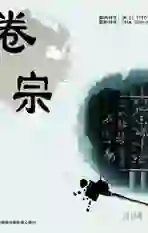Literature Review of the Study of Culture—loaded Terms
2017-03-24LiuFangjunQuanShu
Liu+Fangjun+Quan+Shuyun+Yang+Jing
Abstract: This paper focuses on the study of the definition, the conceptual and associative meanings and the classification of culture-loaded terms.
Key Words: culture-loaded terms; definition; meaning; classification
1. Definitions of Culture-loaded Terms
Culture-loaded terms embody rich culture information and could reflect the characteristics of a culture, and different scholars have different definitions for them. Mona Baker defines them as “culture-specific”: words in one language express a concept which is probably unknown to another culture, and the concept might be either abstract or concrete, and such concepts are referred to as culture-specifics. Louis B. Salomon has given the definition as “vocabulary blanks” and “semantic unfacts” and culture-loaded terms are also referred to as “keywords” to a unique culture. Peter Newmarks explanation of culture-loaded terms is associated with a certain language and could hardly be literally translated, and he also mentions that many cultural conventions are described in daily language, and literal translation is sure to distort the meaning.
A distinguished Chinese scholar, Wang Huan, states that each language has culture-bound terms that are closely relevant to the cultural traditions of the people who speak that language, and that represent the ideas, concepts, and ways of thinking of the people and things from that unique and peculiar culture. Usually, there are no equivalent expressions in another language and culture, since such people and things do not exist in other cultures. Chinese translation scholar, Hu Wenzhong has made a distinction between culture-loaded lexemes from non-culture-loaded ones, and his gives the definition of culture-loaded terms as the lexemes which are loaded with specific national culture, and they are the direct or indirect reflection of national culture in the structure of lexemes. Lian Shuneng gives a list of 26 types of culture-loaded vocabulary, including idioms, proverbs, allusions, color terms, political words, euphemisms, animal words, plant words, taboos, and so forth.
2. The Conceptual and Associative Meanings of Culture-loaded Terms
Each language has four major structures, namely, sound, lexeme, syntax and discourse, in which lexeme is the most active part, and it usually reflects the development and changes in a given society. Culture-loaded terms are the essence of a language and culture, and they are just like a mirror, which could reflect the characteristics of a language and culture.
“Meaning” is a key issue to be dealt with in translation, and language is a social and cultural phenomenon which could reflect the objective world. The objective world is sophisticated, so as the meaning of a language. In the year 1974, British linguist Geoffrey Leech published his well-known works Semantics, in which he classified meanings into seven different ingredients: conceptual meaning; connotative meaning; stylistic meaning; affective meaning; reflective meaning; collocative meaning; and thematic meaning. These different meanings could also be generalized into two main types of meanings, namely, conceptual meaning and associative meaning. Conceptual meaning could be called denotative meaning or cognitive meaning, which is based on the experience or reference observed from the objective world. Associative meaning is a general term for connotative meaning, stylistic meaning, affective meaning, reflective meaning and collocative meaning. Associative meaning is derived from a given cultural experience, and it may vary from one language to another, therefore, one may notice that associative meaning could reflect and represent the real attitudes and values of a nation.
3. The Classification of Culture-loaded Terms
Nida has classified culture into five types: ecological culture, material culture, social culture, religious culture and linguistic culture. Thus, culture-loaded terms could also be classified according to this classification, namely, ecological culture-loaded terms, material culture-loaded terms, social culture-loaded terms, religious culture-loaded terms, and linguistic culture-loaded terms.
Ecological culture-loaded terms are concerned with the unique points of nature and geography of a certain language and culture community. Material culture-loaded terms are concerned with the material culture invented or created by the people of a given language and culture community. In general, material culture-loaded terms include the terms for production tools, transportation, daily appliances, drinks, food, medicine, housing, costumes, measures and weights, and so on. Social culture-loaded terms are concerned with traditions, conventions, customs, social behavior, social patterns of a given language and culture community. Religious culture-loaded terms are concerned with the special features of religions of a given language and culture community. Linguistic culture-loaded terms are concerned with the unique points of the phonetics, grammar and language systems of a given language and culture community.
參考文献
[1]邓炎昌,刘润清.Language and Culture[M].北京:外语教学与研究出版社,1989.
[2]Eugene A. Nida. Language, Culture and Translating[M].上海:上海外语教育出版社,1993.
作者简介
刘方俊(1981-),男,吉林省洮南市人,内蒙古工业大学外国语学院讲师,硕士,研究方向:英语语言学、教学理论与实践。
全树云(1980-),女, 内蒙古工业大学外国语学院讲师,硕士,研究方向:英语语言学、教学理论与实践。
杨静(1985-),女,内蒙古工业大学外国语学院讲师,硕士,研究方向:英语语言学、教学理论与实践。
